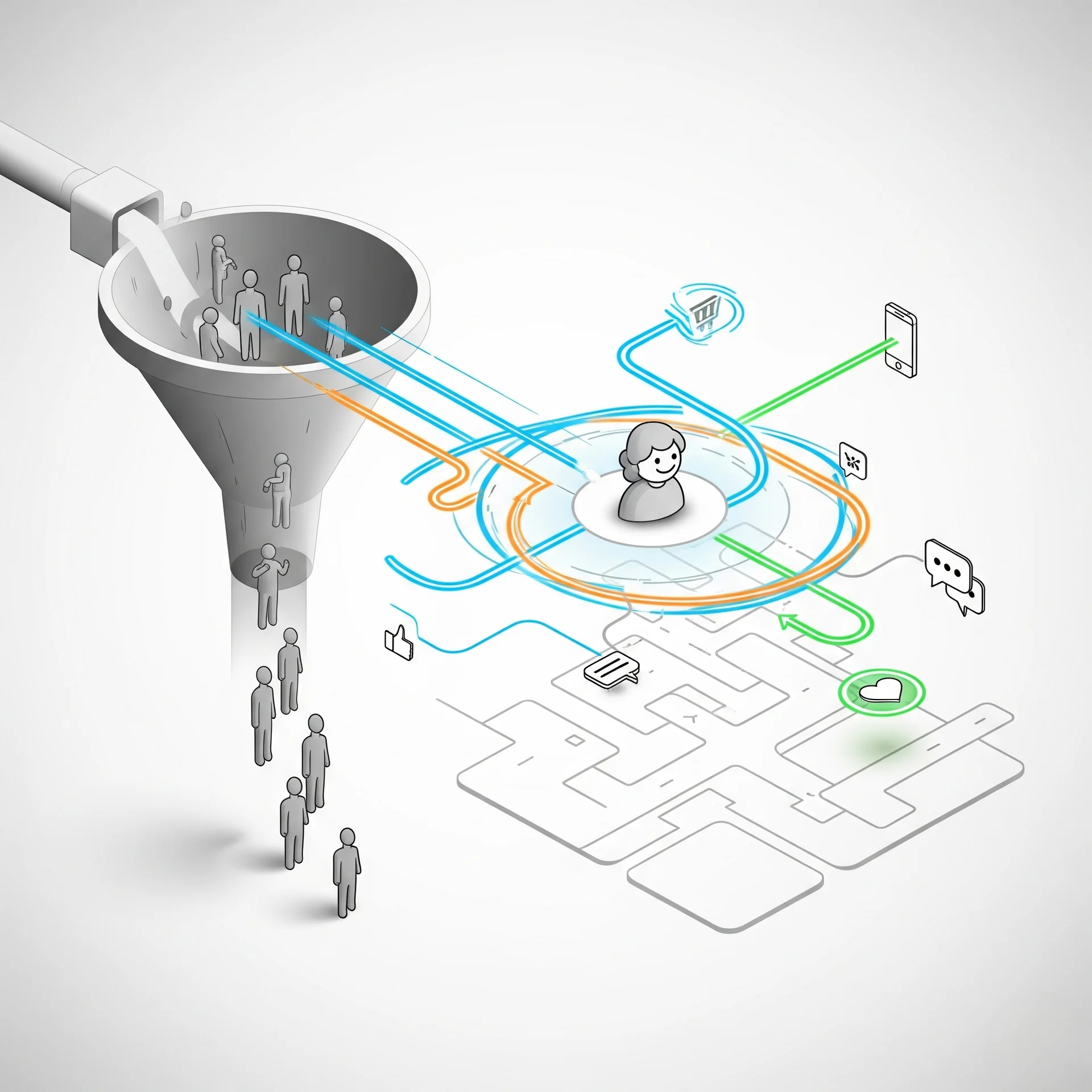
AI
AI is not magic, it's strategy: How to adopt it without failing?
AI has moved from science fiction to a transformative force. However, its adoption is a strategic act, not magic. We sho...

Do you remember that classic sales funnel diagram? Wide at the top (Awareness), narrowing as prospects move towards a purchase. For years, it was the treasure map for any sales team. It gave us structure, a process, a way to measure progress. But let’s be honest: in today’s digital world, that map often leads to a dead end.
The modern customer no longer walks in a straight line. Their journey is more like a dynamic maze: they research on Google, ask for opinions on social media, watch a video on YouTube, read reviews, interact with a chatbot, and then, perhaps, decide to talk to a salesperson. Trying to force this complex behavior into a rigid, linear funnel is not only ineffective; it’s frustrating for the customer. If we want to thrive, we must stop thinking about how we sell and start obsessing over how they buy.
The traditional funnel makes a fundamental mistake: it focuses on our process, not the customer’s experience. It assumes all prospects are the same and will follow the same path. The reality is that the power has shifted. The customer is in control, and their journey is unique, personal, and omnichannel.
The new paradigm is not a funnel, but a Customer Journey Map. This approach recognizes that every interaction, from the first “like” on Instagram to the post-sale follow-up call, is an opportunity to strengthen the relationship. It’s not about pushing someone down; it’s about accompanying them on their path, being a helpful and valuable guide at every crossroads.
So, how do we start drawing this new map? It’s not a magic formula, but a change in mindset supported by three fundamental pillars:
Active Listening and Empathy: The first step is to deeply understand your customer. What keeps them up at night? What questions do they have at each stage? This goes beyond demographics. It involves analyzing conversations from the support team, monitoring social media, and, above all, training our sales and service teams to listen more than they talk. When you understand their true motivations, you can anticipate their needs.
Frictionless Omnichannel Experience: The customer doesn’t distinguish between your marketing, sales, or post-sale departments. To them, there is only one brand. Therefore, their experience must be consistent and seamless across all touchpoints. If they start a conversation on the website chat, the salesperson who calls them must be aware of that context. Internal collaboration between teams is no longer an option; it’s the engine that makes the customer journey run smoothly.
Personalization That Adds Value: Technology allows us to personalize communication on an unprecedented scale. However, true personalization isn’t just putting the customer’s name in an email. It’s about offering them relevant content at the right time, recommending solutions that genuinely solve their problem, and making them feel understood as an individual. It’s the difference between a pushy salesperson and a trusted advisor.
Abandoning the sales funnel doesn’t mean giving up on having a process. It means replacing a rigid, outdated paper map with a dynamic GPS that adapts in real-time to the route the customer chooses. It’s a change that requires aligning our teams, investing in the right technology, and, above all, placing a genuine curiosity for the customer at the center of our strategy.
The question we must ask ourselves is not how we can sell more, but how we can help more. In doing so, the sale becomes a natural consequence of an exceptional experience.
So, are you ready to redraw your customers’ map?